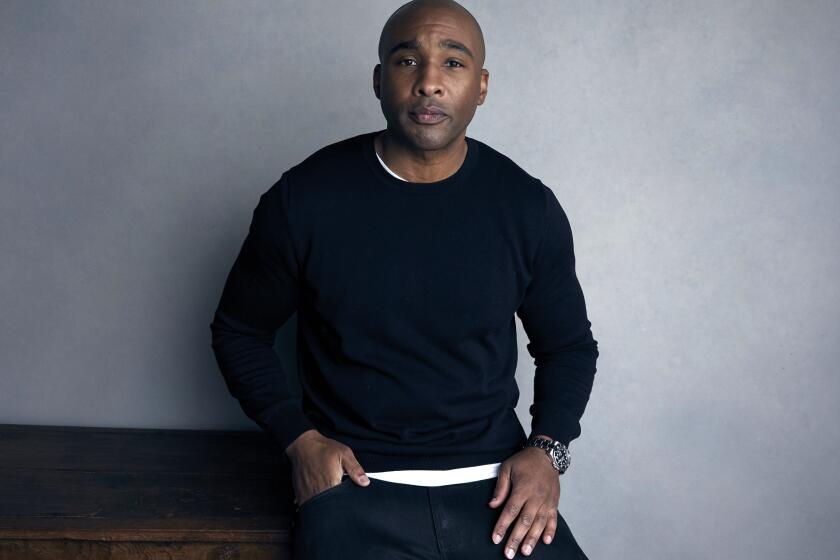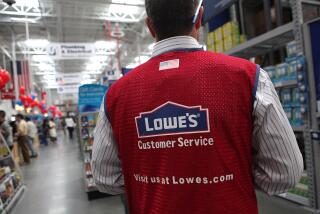Inviting new people to make stories. How this VP is pushing Netflix to diversify
Vernā Myers traces her calling as a diversity advocate back more than 50 years, when Martin Luther King Jr. was assassinated. It was the day before her eighth birthday. Even at her young age in Baltimore, she understood the sacrifice King made and what he stood for.
“I wanted to live out that dream,” Myers said. “I wanted it to be true.”
Myers began her career as a Harvard-trained lawyer at a Boston law firm in 1985 as its only Black attorney. She later became the deputy chief of staff for the attorney general of Massachusetts and then founded her own business, advising companies such as Microsoft and Bank of America on issues including race, ethnicity, gender and sexual orientation. In 2018, she took on a new challenge — becoming vice president of inclusion strategy at Netflix.
The Los Gatos company earlier this month released its first inclusion report, revealing that 47% of its global workforce is female and 46% of its U.S. employees are from underrepresented racial or ethnic groups. But Myers says more work needs to be done. She spoke to The Times about the efforts Netflix is making to create stories, and support and hire a workforce, that are inclusive.
You have worked in the public and private sectors. When it comes to inclusion efforts, do you see common patterns?
Because I’ve been in so many industries, I think the real problem is not specifically in a company. It’s that the companies sit inside of a society and that society has a hierarchy and that hierarchy has created systemic exclusion and oppression. So even when you are committed to bringing in talent from different backgrounds, you still are going to face issues around access, training, opportunity and social capital, which operates to replicate the power system that already exists. I would say almost every industry, in every company, has this problem.
With Netflix, you look at the entertainment world and you look at the tech world, and so you have to be extremely intentional. That’s what we are doing. Some companies are like, ‘Oh, we have one person who’s working on diversity and inclusion.’ Our team is 17 and the purpose of our team is to really teach and guide and coach everybody in the company to use an inclusion lens when they are doing their job on a day-to-day basis — to really ask themselves the question, ‘Are we hearing all the perspectives? Who’s here, who’s not here?’ We’re trying to actually give everyone that lens, which means that we don’t have to make every decision.
As the streaming wars heat up, Netflix is not just aiming for big name directors, but also making an effort to support first-time filmmakers. It’s part of a long-term strategy to build the company’s feature film business.
One of the strides that Netflix made over the last three years was doubling the number of Black employees to 8% of its U.S. workforce. What are some of the steps Netflix has taken to increase representation and provide a supportive environment?
The outreach, looking at different places, making sure that people are open when they are interviewing. We have something called “DJs and Discussions.” Believe it or not, that is a recruitment tool. We usually have some talent person from the content world, we have someone internal to our company, and then we have a conversation. We talk about particular issues that we think folks who’ve been underrepresented would like to hear and understand that at Netflix, you can talk about these things. We’re not afraid to address certain issues.

We also have an opportunity where we bring executives together with people of color who are also executives from other companies and we chat with them about a particular issue around diversity. [One topic on systematic change led Netflix to allocate 2% of its cash holdings to Black-owned banks.]
One of the things you have to do as a company is you have to grow the network. Mostly it’s about getting to know the people who know the people, so when you have an opening, you’re not just picking up the phone or typing an email to the group you’ve always known. You have a larger group of people from which to draw talent.
A review of senior leadership at the six major media companies shows that the top ranks remain overwhelmingly white.
In your recent report, you talk about “spotting bias” in the interview process. Can you elaborate on that?
There’s this very pesky bias issue called “in-group favoritism,” which quite unconsciously, we just love ourselves. So when you are hiring, you constantly have to ask yourself, am I interested in this person because they’re like me or am I actually applying criteria fairly and equally across the group of people that I am interviewing? So we start talking to people about also examining your team. Who’s missing? How do you add to the diversity in your team? And that can be on a lot of different dimensions. The other thing we’re doing is not looking in the same places, because if you look in the same places, you find the same people. The work for us is to look for excellence in places that we haven’t looked before.
The report also says that the company is not where it wants to be and needs to do better. Where do you want to be?
I don’t think we want to limit it to a percentage. Part of our way of doing things is always incremental improvement. The North Star for us is that we would create the kind of access and be so attractive as a company that percentages would be limiting rather than leading. It’s really about keeping track, measuring, always making progress but not limiting what that progress could look like because we have never even seen what it would look like to have a fully diverse, inclusive company. No one’s really seen that. That’s where we’re aiming.
Latinos still woefully underrepresented in Hollywood, with major movie portrayals remaining rare and stereotypical, USC study finds.
Latinos are an important consumer group when it comes to entertainment spending, yet they often are underrepresented on screen and at executive levels in Hollywood, including at Netflix. Why is that and what is Netflix doing to improve this?
I’m not sure of all the reasons why there’s such a deep underrepresentation. We know for sure this is a group of people that we want to have in our talent base, both internally and on our content. So this is an area where we are going to be committed to making a difference, and we’ve already started some things. We’ve partnered with TalentoTotal [a nonprofit group] to engage leaders of diverse backgrounds in Latin America, specifically Brazil. They’ve also helped us understand the uniqueness of the Black experience in Brazil as we aim to increase Black representation there. We’ve hosted multiple events with Techqueria and their extensive network of Latinx folks in tech.
After L.A.-based Digital Brand Architects posted its support for Black Lives Matter, it faced a backlash from Black former employees who say say they were mistreated by the company.
If you look at the majority of box office films today, many are led and directed by white people. Do you think Hollywood is inherently racist?
I would say that racism has definitely, undoubtedly influenced what we see and who gets to determine what we have seen, but I do believe that is changing. Stacy Smith at [USC] Annenberg says that what her research shows when you have directors of color, you have more shows that utilize talent of color.
When I say “racism,” the reason why I say it that way is it’s so built into the system that people don’t even notice it. They don’t even recognize it, and then you’ll sometimes hear people say, “Well, I just can’t find any more talent,” and it’s not that they’re lying. It’s just that they have very limited networks and they actually don’t know that their world is not the whole world. They’ve gotten into a certain rhythm and that rhythm is replicating dominance.
I do believe that is changing because people want to see themselves authentically. They want to see multidimensional aspects of their community. They want us to get out of stereotyping. I think a smart company is looking to please their customers and customers to be.
Netflix added a record number of new subscribers in 2020, helped by a surge in home viewing.
We’ve seen the popularity of shows like Regency romance “Bridgerton” and heist series “Lupin” that feature diverse casts. Is this part of Netflix’s strategy to have more diverse content?
First of all, we’re trying to entertain the world, so we know there’s so many tastes out there. We know there’s so many things people haven’t seen. “Bridgerton” and “Lupin” are so fresh because we are now inviting more and more creators from lots of different backgrounds. We’ve got Shonda Rhimes, who’s really awesome. We’ve worked with Mindy Kaling and Ryan O’Connell, who did “Special.” What “Bridgerton,” “Lupin,” “Special” — [programs] like that — it reflects that, one, we’re inviting new people to make stories and that we don’t know how far that’s gonna go, but I believe that is really a lot of the secret sauce.
What’s kind of exciting is that Netflix is learning that we believe that a story anywhere can actually please people everywhere. You just never know. So “Lupin” is French, but people are loving it, “Bridgerton” is back in the day, where a lot of folks have not watched a period piece in their life, but it’s Shonda and it’s exciting and it’s interesting. We’re just scratching the surface here. It’s part of how we want to satisfy our multicultural customer base.
Inside the business of entertainment
The Wide Shot brings you news, analysis and insights on everything from streaming wars to production — and what it all means for the future.
You may occasionally receive promotional content from the Los Angeles Times.
More to Read
Inside the business of entertainment
The Wide Shot brings you news, analysis and insights on everything from streaming wars to production — and what it all means for the future.
You may occasionally receive promotional content from the Los Angeles Times.













